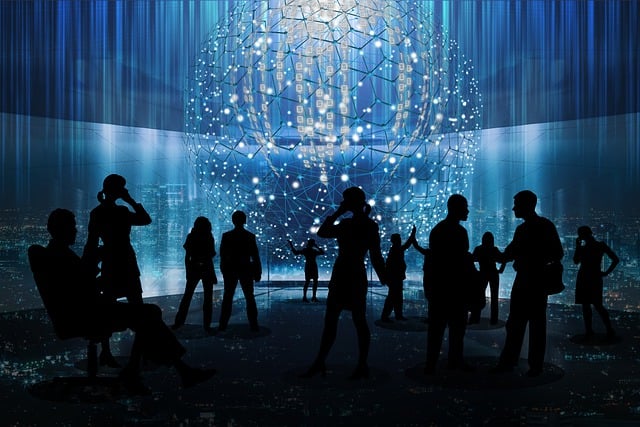The latest web design trends emphasize simplicity, minimalism and engaging user experiences. Sites use clean layouts, neutral palettes, and flat design with carefully curated content for better readability. Interactive elements like animations and dynamic forms attract attention and boost engagement. Micro-interactions enhance user satisfaction by adding subtle visual cues. Dark Mode and customizable color schemes improve accessibility and aesthetics. Responsive design ensures adaptability across devices. Personalization tailors content to individual users, fostering loyalty in a competitive digital landscape.
The latest web design trends are reshaping digital experiences. From minimalist aesthetics that simplify designs for a modern look to interactive elements that bring websites to life, these innovations enhance user engagement. Micro-interactions add subtle yet impactful gestures, while dark mode and color schemes improve accessibility. Responsive design ensures optimal viewing across all screens, and personalization tailors experiences for individual users. Discover these trending features revolutionizing the online landscape.
Minimalist Aesthetics: Simplifying Design for a Modern Look

Minimalist aesthetics have become a dominant trend in the latest web design trends. This design philosophy advocates for simplicity and cleanliness, focusing on negative space to enhance readability and user experience. By stripping down layouts to their essentials, minimalist designs create a modern look that is both visually appealing and easy to navigate. Websites embracing this approach often employ neutral color palettes, san serif fonts, and flat design elements to convey a sense of sophistication without clutter.
This simplification does not mean sacrificing functionality or information architecture. On the contrary, minimalist websites carefully curate their content and features, ensuring every element serves a purpose. As a result, users can quickly find what they need, leading to improved engagement and conversion rates. Minimalist aesthetics not only cater to modern aesthetics but also cater to the user’s desire for straightforward, uncluttered digital experiences.
Interactive Elements: Bringing Websites to Life

Interactive elements are a key aspect of the latest web design trends, bringing websites to life and creating engaging user experiences. From animated buttons and scrolling effects to dynamic forms and immersive multimedia content, interactivity adds depth and visual appeal to digital platforms. These features not only capture the attention of visitors but also encourage them to explore different sections of a site, fostering higher engagement and potential conversions.
Incorporating interactive elements requires careful consideration of user journey maps and design principles to ensure they enhance usability rather than create friction. The latest tools and technologies make it easier than ever to integrate these features, allowing designers and developers to craft unique and captivating experiences that set their websites apart in a crowded online landscape.
Micro-Interactions: Small Gestures with Big Impact

Micro-interactions are small design elements—a subtle animation, a gentle feedback touch—that significantly enhance user experiences. They make interfaces more engaging and intuitive in the latest web design trends. These tiny gestures can range from a button that gently pulsates on hover to an animated transition when filling out a form. While they might seem insignificant, micro-interactions can profoundly impact how users perceive and interact with a website or application.
By adding personality and subtle cues, micro-interactions foster a sense of delight and satisfaction in users, encouraging them to explore more of the site. In today’s digital era, where attention spans are limited, these small design touches can help capture and retain user interest, ensuring that visitors stay longer and engage more deeply with the content or services offered.
Dark Mode and Color Schemes: Enhancing User Experience

The latest web design trends highlight a growing emphasis on user experience, with Dark Mode and customizable color schemes emerging as powerful tools to achieve this. Dark Mode, which offers a high-contrast, dark-colored interface, has gained immense popularity due to its ability to reduce eye strain, especially in low-light environments. This feature caters to users’ preferences for minimalism and provides a sleek, modern aesthetic.
Color schemes play a pivotal role in setting the tone and atmosphere of a website. Web designers are moving away from generic, bright palettes towards more nuanced, earthy tones and cool hues. These subtle color choices not only enhance visual appeal but also contribute to a brand’s identity and create an engaging user experience that resonates with audiences.
Responsive Design for All Screens: Optimizing for Every Device

In today’s digital era, one of the latest web design trends that has taken center stage is responsive design optimized for every device. This means creating websites that adapt seamlessly to different screen sizes and resolutions, ensuring an optimal user experience regardless of whether a visitor is on a desktop computer, laptop, tablet, or smartphone. Responsive design is no longer a luxury but a necessity, as users increasingly access the web via their mobile devices.
To achieve this versatility, designers and developers employ flexible layouts, fluid images, and CSS media queries to adjust content and visuals as the screen changes. This approach not only enhances accessibility but also improves load times and search engine rankings, making responsive design a cornerstone of modern web development. By embracing these latest web design trends, businesses can foster stronger connections with their audiences and drive engagement across the digital landscape.
Personalization: Tailoring Web Experiences for Users

Personalization has emerged as a key aspect in the latest web design trends. By tailoring user experiences based on individual preferences and behaviors, websites can create more engaging and relevant interactions. This involves leveraging data analytics to understand user patterns, allowing for dynamic content delivery that adapts to their unique needs.
For instance, personalized product recommendations on e-commerce sites enhance navigation by suggesting items aligned with users’ browsing history or preferences. Similarly, customized content on news platforms, based on reading habits and interests, keeps users invested in the site. Such tailored experiences not only improve user satisfaction but also foster brand loyalty, making personalization a powerful tool in today’s competitive digital landscape.
